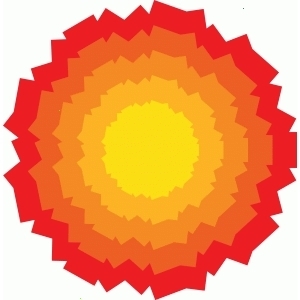Help support. Please make Affinity possible on Linux!
I work in CGI and I use Photoshop for about 4 hours a day preparing images for clients, of whom use Photoshop and affinity (cheaper and one off payment). in the office, we are at our whits end with windows bugs and its just general annoyances.
we use Linux for rendering, so we’ve seen the light. but we are forced into using windows for the creative suites. I would love it if affinity were to offer native Linux support, the entire office would love the switch. however I’m very doubtful it will happen.
Yea yea. I’d love it, but it would still be a proprietary product you’d be tied into as a customer. I’d rather support Graphite when I can https://graphite.rs/ as well as Krita and Inkscape.
Oh wow, hadn’t heard of graphite/graphene yet, and it looks so interesting! I rarely explicitly thank a comment that gave me a lot personally, but this time I think I have to. The graphene framework and the concept of artwork as compiled programs is pretty intriguing read! Thanks a bunch!
Nice. Hopefully that matures a bit more but yes the technologies are exciting
I don’t mind paying for good software on Linux. I don’t understand this idea that everything Linux should be free.
I have paid (by donating to them) for many of the open source software I use, so I don’t think that everything should be free (as beer) but should be free (as freedom) and therefore open source.
I don’t mind paying for software either. I own Affinity & Zbrush licenses. However I run the risk that in the future, these products may be sold to the highest bidder and development stalls (as it happened a couple years ago in the case of Zbrush) or interoperability suffers. When this happens, not only is your database of scenes and files obsolete, you also have to go through the process of learning a different program, and DCCs are… huge. Whole factories. It’s very hard to reinvest the time necessary to learn them inside out and be proficient again. It is also impossible to contribute to a non-open codebase. Proprietary programs are ticking bombs.
That’s not what people demand, it’s a side effect of users demanding software be open source and developers saying that’s not economically viable.
It’s not that paying for things is bad. The problem is that good software is vital to digital artists’ income, and both purchasing and learning that software is a substantial investment. When a company sells or otherwise enshittifies their software, the artist is then put in a very hard place. Open-source software is the only way to combat that unfortunately likely scenario. By all means, please pay for that software if you can afford to. Doing so subsidizes usage for less fortunate people who may be able to better their situation as a direct result of your generosity.
honestly inkscape is great :D I switched from illustrator after my adobe creative cloud subscription expired, and it’s been an easy transition!
Agreed it’s very capable today
It’s owned by Canva, so I’d be willing to bet their next release will we some kind of web version - in that case there would be no need to port it.
And it’ll be subscription based.
Doesn’t matter cause I bought the lifetime license. Sure, maybe it won’t get updated any more, but the current state is pretty much sufficient.
If you don’t start using and contributing to free tooling now, they’ll never get better and they’ll never be “professional” (whatever that actually means).
You can continue to lock yourself into proprietary tooling, but that result will always be the same: a decent product gets bought, made subscription, get worse in quality while bleeding the customer out via subscription. You are already there will Adobe, and its started for Affinity.
So, the longer you hold out on FOSS tooling, the worse and slower things will be.
Look at how excellent FOSS tools are when they get attention and investment: blender and krita.
I’m almost sure it works with wine
It requires a custom version of wine
Why?
Because for it to run it needs a patched version of wine with dxcore support(or smth like this)
Oh I would love this. I’m a Mac and Linux user and use this on Mac already. Not having to switch computers would be nice. But in general I wish more companies support Linux.
You can already use gimp and inkscape.
Also darktable, rawtherapee, DigiKam and Krita. Not sure if those are suited to professional work, but for amateurs they are more than enough.
The problem is that if widespread desktop Linux adoption is the goal, then the tools for amateurs aren’t going to cut it. Not even close. Tools that professionals use need to be available and they need to work like they do on macOS and Windows, it’s pretty much that simple. I think Darktable is fine for me tinkering around with my amateur photos. If I were a professional using it daily I’d probably hate it.
As much as we wish it wasn’t true, most people don’t really give a shit about their OS. It’s the logo that appears when they boot up their computers to work. What they do care about is having their tools available to them, if they can’t use the Adobe Suite, Pro Tools etc (and no, WINE is not a practical solution for most of these people) then Linux of any flavour is functionally useless to them. It’s for this reason that smug people saying “just switch to linux lol” as if it’s an actual solution whenever a Windows user complains about some rabidly anti-consumer bullshit that Microsoft is forcing onto them annoys the hell out of me.
It’s changing somewhat now, but it’s why you’ll find that a lot of people in the creative industries traditionally stick with macOS, because for a long time the options for those professionals were just better on that platform and people tend to stick with what they know.
On the other side of that coin, you have software vendors looking at the single-digit market share that Linux on the desktop “enjoys” and coming to the fairly reasonable conclusion that building packages, fixing bugs and providing support for myriad different distros just isn’t worth the headaches it will inevitably cause for them.
Classic chicken and egg problem.
Nah, they work great. The problem is just your generation.
If you learned the other tools first, you would say that adobe suite is clunky, difficult to use, and not suitable for professionals.
Gimp and inkscape both run fine on macOS and Windows.
I’m not really sure what assumptions you can reasonably make about me or my generation given that you have no idea who I am or how old I am, but I’ve been working with FOSS in my personal life for about 20 years give or take, a bit less than that in my professional life. I actually used to work in the music industry professionally before changing careers to tech with a FOSS slant later on, so I’ve seen both sides of this coin.
I’m genuinely not trying to shit on FOSS tools or say that they’re not suitable for creative professionals (my gripes with Darktable are very much personal to me), I love FOSS and the philosophy strongly aligns with my personal values but it’s not just about how “good” these tools are on an objective level. This is a cultural problem as much as it is an engineering problem, as you seem to have correctly identified.
You have to understand how ubiquitous something like Pro Tools suite is in the music industry and for how long that has been the case - the Pro Tools session format truly is a global industry standard by anyone’s measure. You can walk into just about any professional recording studio on the planet with your session files and the recording engineer will know exactly what to do with them, and so will mastering engineers and record producers. If you go to school for audio engineering, they’re teaching you Pro Tools. There are entire companies that produce outboard gear and control surfaces just for use with Pro Tools. You get the idea. The reason for that ubiquity is that Pro Tools, like many other creative software solutions, captured the market in the 90s when every other solution was an utter joke in comparison and they built on it from there. Sure, there’s fantastic alternatives now, but when you know Pro Tools like the back of your hand and so do all of your colleagues and collaborators, when all of your hardware and software works with it seamlessly… how likely are you to change?
I’m not suggesting that this isn’t a problem by the way - vendor lock-in is a serious bugbear of mine - but it’s a very real barrier to getting creative professionals to switch to FOSS alternatives, and in turn to getting software vendors to take FOSS platforms seriously. It’s a reality that cannot be hand-waved away by saying that x or y tool works great and that people just need to learn it and switch so that they can use Linux. If you can’t run Pro Tools on Linux, that’s a whole industry that won’t use it. It’s that simple.
Nah, the only reason those tools are used are because of momentum and the fact that most of their new hires have experience with it, also due to momentum.
Ban Photoshop from being taught in schools, and in two generations everyone will say that Photoshop is crap because it takes so long to do anything.
I kind of feel like you just ignored everything I wrote.
This is definitely the take of someone who doesn’t need the full capabilities of such tools to make a living.
This is definitely the take of someone who learned Photoshop before learning Gimp and doesn’t understand its full capabilities.
You are on to something. I have seen many videos about gimp & krita vs Photoshop. All the vidoes just compared them by treating Photoshop as the gold standard and ANY difference was points off. Even jiat changing what the hot keys did.
Why, well thet often compair drawing times and changing from ctrl+t to ctrl+w slows them down.
Inkscape sure, but gimp is no comparison for photo. Also Publisher is really good
GIMP is honestly fantastic. My workflow goes draw in GIMP, import to Inkscape to convert pieces to vector, then bring them into Godot where shaders get applied. I would rather draw in GIMP than any other program. I find drawing in Inkscape super awkward in comparison. GIMP is pretty no-frills, but it does the job. I prefer it over Photoshop. With Darktsble I’ve found it useful for importing high res raw images for textures too.
I don’t know why people hate on it so much. It’s all about using the tools you’re comfortable with.
i dont think gimp is useable. gimme ANYTHING but gimp. photopea,krita, whatever…but to hell with gimp.
I’ve just tired installing the trial of Affinity on Linux by using a script for Lutris, and I’ve failed.
The day when Serif releases an Affinity suite for Linux I’m going to buy it asap.
In the meantime, I’ll stick to Gimp and Inkscape…
is there anything more useless than signing online petitions?
Complaining about online petitions.
Got 'em#
We have Affinity at home:
Affinity at home > Gimp
GIMP with the PhotoGIMP overhaul and Resynthasizer plugin (content aware fill) is pretty darn solid. Not perfect, but a massive upgrade from stock gimp.
Gave it a shot so many times just couldn’t get onboard with it…Even with the lastest release. The icons alone annoy me…
This is such a looooong shot, a more realistic plan would be to play the Powerball to win and use your winnings to fund open source programs into matching feature set.
Which is also wildly unlikely, but just a little more likely to happen.
If you wan’t to use FOSS I get it, I want to. But when it comes to professionnal workflow you sometimes have to put your ego on the side. When I tried to ditch the Adobe Suite the Free(dom) alternative didn’t worked for me or the proprietary alternative where simply better.
Inkscape is great but Affinity Designer is superior in many regards and even it is inferior to Adobe Illustrator. GIMP and Krita are awesome tools, honestly GIMP3 makes me want to play more with it and Krita is an awesome digital painting software, one of the best out there. But for photo editing Affinity Photo is still better for my workflow even if I still prefer to use Adobe Photoshop and Lightroom.
The new redesign of Scribus in unstable is exciting but I don’t see myself using it for professionnal work. Affinity Publisher is just better and yes again Adobe InDesign is still superior.
I’ve almost fully ditched Adobe (with the exception of Photoshop), I often try Free and Open Source alternatives and while some are good enough none can compare to Adobe who is leading the industry by the way, that’s the sad truth as of today.
Here is a list of alternative to Adobe I’ve made : https://alternativeto.net/lists/25812/softwares-for-content-creators-that-don-t-want-to-supports-adobe-monopole-/
If you wan’t to use FOSS I get it, I want to. But when it comes to professionnal workflow you sometimes have to put your ego on the side. When I tried to ditch the Adobe Suite, the Free(dom) alternatives didn’t worked for me or the proprietary alternatives were simply better.
Then, I would argue, the alternative isn’t to sign petitions to make the corporate guys make their proprietary stuff available on FOSS operating systems. The alternative is to contribute to the FOSS alternatives in order to make them as good as the proprietary.
I’m not saying that you in particular haven’t contributed (either financially or developmentally). I don’t know you, so this isn’t particularly directed at you.
But in general, the “FOSS isn’t as good as proprietary stuff” crowd has overwhelmingly never actually tried to fund or contribute to the development of the software itself and their complaints amount to “Why isn’t my free thing as good as the thing they make me pay for?”
In which case the answer is “of course it isn’t…you’re telling me the software developed on the evenings and weekends by enthusiasts doing it in the spare time for NO money isn’t as polished as a fully funded business software!? NO WAY!!! I’M SHOOKETH!!!”
The alternative to the (perceived) quality disparity between FOSS and Proprietary isn’t to go begging at the Corporations doorstep; it’s to make the FOSS alternatives good enough to take the throne of “industry standard” away from the corporations.
It’s not impossible…hell, Blender is the poster child for pretty much doing exactly that. It’s not the “industry standard”, but it’s accepted in the industry in ways that GIMP and Inkscape still aren’t. And the reason is because it’s good enough to be there.
I agree with you, but there’s two sides of the coin.
I would rather pay for a finished product that is good. Sure I can download Linux for free, but I’d rather pay for it. I’d rather support teams that are putting out a product to ensure it is the best it can be and be continually maintained.
FOSS doesn’t have to be free. Nor should it be.
However when projects get organized like that they become organizations. Organizations become businesses. And that’s fine. Let’s support them so they can eat and feed their kids.
So it begs the question, if I feel that way about them is it fine to support non open source orgs and software? Of course it is.
So it basically comes down to the complaining that the software is not good enough.
Of course “good enough” isn’t binary, so if its on the threshold of usability I use it and if its severely lacking then I don’t. No big deal.
If its free, then there is no reason to complain regardless. If you’re paying for it, I think your opinion has a bit more weight. Of course there’s still a scale. If it’s so far removed from usability then I just don’t buy it. Windows is a good example of that. But if its close, voicing your opinion that you want certain features is more than fine. It doesn’t remove your support. Wanting Affinity on Linux is a fine desire. If they haven’t said they aren’t going to then asking isn’t a complaint. It’s a want.
I use Affinity because its the best solution I can find. I would love to have it on Linux. Maybe one day it will happen, but I’m not holding my breath. Supporting Affinity in hopes that they make it better for me (for my preferred platform) is OK, because I’m finding a way to use the product that suits me today. If that way becomes too much hassle tomorrow, I’ll move on. But if they make it easy for me to stay with them then I won’t. But either way, supporting Gimp won’t make it Affinity. It’ll just make Gimp a better Gimp.
I guess it boils down to, do you support something that isn’t what you want in hopes it becomes what you want it to be or do you support something that is exactly what you want, hoping it will go to where you want it?
Sorry I rambled on there (I’m tired). I do agree with you but there’s a counter point I also agree with. I don’t think they are exclusive.
I agree with you. My dream is that every public school should use and contribute to FOSS and FOSH, but I’m an utopiste. Honestly I wish Serif would at least free some of its codebase but that’s very unlikely. I would like to have these proprietary software as I still rely on them for my workflow on a GNU/Linux machine rather than macOS and that sounds more reasonnable for a private company building private code and selling licences. Today it’s some of the few software that I can’t run on GNU/Linux to ditch a proprietary OS for work.
I have finally ditched Windows years ago after living my whole childhood in that proprietary crappy spyware environment and did tried many FOSS tools for professionnal work and I do use some (PenPot, blender, OBS, Thunderbird, VSCodium (and Zed a bit), LibreOffice, Nextcloud, UltimakerCura and Signal to name a few).
Unfortunately I still do rely on proprietary software (and these rely on proprietary OS) and yeah there is a reason for that : I need to get the work done. They have the money proprietary licence advantage over FOSS tools of course but hey a small part of the money I make thanks to these proprietary tools are sent to foss projects I want to support. It’s not as big as I wish and I don’t have enough time nor skills to contribute as much as I want to the Free World in general but I do my part and it has grown over the years.
I would prefer relying on proprietary solution on a free OS than relying on proprietary software that rely on proprietary OS. That’s why I signed this (probably useless) petition.
I agree with you.
For my personal stuff, I am on Linux 100%.
I tried for a long time to put privacy first and Linux first everywhere. At some point, I realized that I am making my work so much more difficult using all these work arounds.
I am still waiting on a few things to come to Linux, once they do, I can try again. But I will keep using what works best for my work as earning a living needs to come first.
The closest Free(dom) alternative that I really see to make a change is PenPot but their Adobe counterpart (Xd) is discontinued. Still a great FOSS tool that I love to use despite some performance issue on big projects.
Just if the projects had a 10th of the funding of Adobe
Yes that would be awesome, probably 1% would still be big.
I have been donating to FOSS project that I rely on (or sometimes project I find important) using free and open source payment method like Bitcoin (even sometime using the Lightning Network) or Monero for two years now. I wish more people that could afford it would do the same. Obviously I don’t donate as much as if I was paying for the full Adobe Creative Suite (which was included in my scholar fees) but I donated a few hundreds USD in total to various projects since 2023 and I won’t stop until I am cut from my income.
And Adobe could make you pay that because they had enough money before, to do the lobbying required to make sure the institutions don’t go FOSS.
Perhaps, would be a nice idea to have some uni that gives both, artistic and programming courses, have the art people interact with software being worked on by the programming people. And they could use any FOSS project for that.
That way everyone gets lots of code to look at and play with, learn skills that otherwise freshers would gravely lack (looking at other’s code) and maybe also get some upstream commits [1]. while greatly reducing school fees
as a result of the art people (real users) interacting with programmers who are now also interacting with industry people (upstream maintainers) ↩︎
I would, but I can’t get through their captcha (even w/ adblockers, tracking, etc all disabled)
I mean, signing a change.org petition has resulted in absolutely nothing, ever, so it’s not like your vote is exactly vital here
Why? Krita exists and it’s FOSS. I would sooner throw them a donation than pay a subscription or fee for something else.
Affinity is a one-time fee at around 80€ for a Photoshop, InDesign and Illustrator clone that sprang unto existence literally to combat Adobe subscriptions. Except since using Affinity exclusively for a year now, it feels better than Adobe ever did. Much more modern. Only missing a rare few of features that have work-arounds.
But, as OP says. Linux support is sorely missed. Because it’s much smaller than adobe there is a lack of community effort to get it to run on linux and if you manage to make it run, it craps out on you.
Since I work professionally with digital art and print, Krita, GIMP, etc. are sadly nowhere closer viable options (I have tried). Unfortunately I had to give up and install Windows last week solely to run Affinity properly, all other software that I use for work runs smoothly in linux, and like 95% of my preferred games (I too refuse to pay a subscription on principle).
Krita is not the same software than these… You don’t use Krita to design a book, you don’t use Krita to manipulate RAW pictures…
Having Krita as basic image editing is doable. Howeverm, if you actually use them professionally, you’ll realize that Krita is definitely not alternative to those.
Krita is a first-class painting software, and even its current development is more closer to be Clip Studio Paint alternative, like having comic layer, webtoon layout, etc. The dev is closely have observation on Clip Studio Paint development.
Affinity Photo is actually easier to use than any alternative, including Photoshop and even GIMP. Its base system also much more faster than Photoshop, GIMP, and even Krita.
FYI, Affinity was bought by Canva, this is probably an advertising. Affinity will probably enshitify in the next release. Hopefully not, but who knows.
i did not know that…
No problem. they are great currently.
I expect an affinity subscription plan.
When the acquisition happened they made a pledge to keep affinity as a separate product and to have perpetual licenses.
Technically they can always introduced a subscription in addition to perpetual licenses but the implication is that they wouldn’t do that.
For what it’s worth, they understand their user base and were vocal about their plans. Maybe they’ll disappoint, but they haven’t really given reason to doubt so far.
This aged really well 😎
Yep, and then everyone will go start looking for another option again. I hope they don’t, but those CEOs got get their more millions paychecks so they can stand up straight at the country club, somehow.













